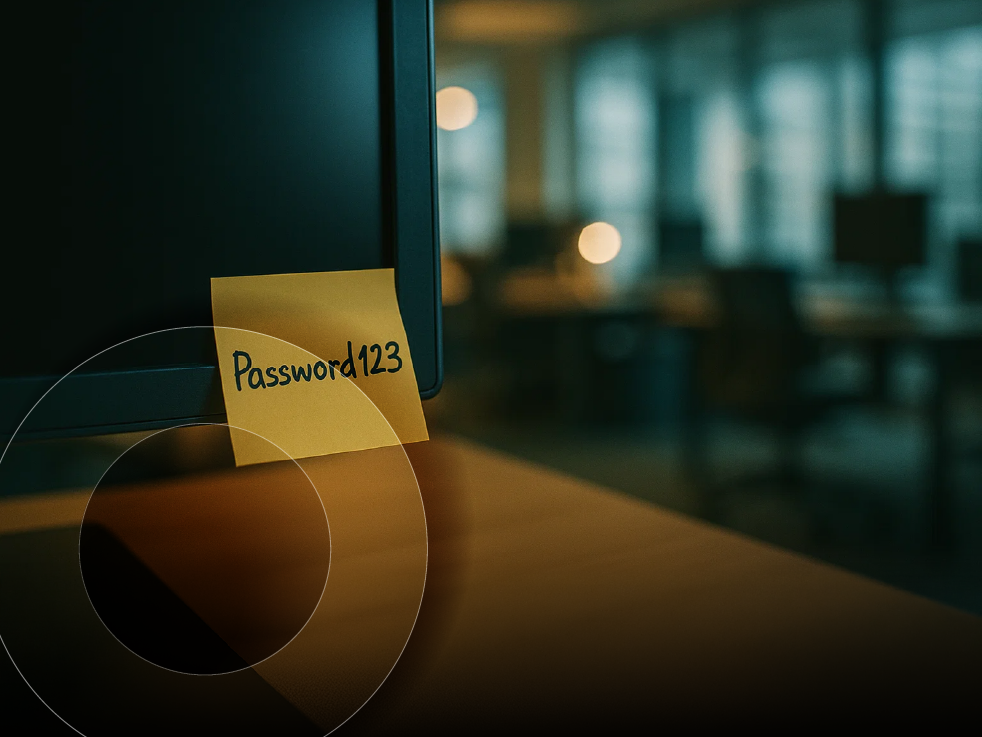How to build an effective IAM program in 2025’s hybrid landscape:
Bad actors beware.

Spoilers ahead: Cybersecurity challenges are coming back with a vengeance—and this time, it’s personal.
Not exactly a plot twist, we know, but it’s pressing nonetheless and requires an urgent response from organizations of all kinds. Next season’s villain is an especially bad actor: The Identity Breacher, which is why a robust identity and access management (IAM) strategy will be so crucial come 2025. Recent data reveals alarming trends:
93% of organizations have faced two or more identity-related breaches in the past year, indicating that identity-related incidents are not just a theoretical risk, but a surging reality for businesses of all sizes.
Let’s explore the critical components of building a resilient IAM program, outlining key strategies to combat identity sprawl and manage privileged access. We’ll also discuss how you can leverage emerging technologies to safeguard digital assets from any bad actors—because from here on out, the only spoiler is your strategy to shut them down.
Understanding identity sprawl
As organizations increasingly shift toward cloud services and adopt hybrid work models, a pressing challenge looms: managing a growing web of digital identities. This phenomenon, known as identity sprawl, expands the landscape for cybercriminals—an unwelcome plot twist in your ongoing series. With over 80% of breach attempts targeting identities and the systems that safeguard them, the stakes have never been higher.
The rise of Software as a Service (SaaS) applications and collaborative tools only adds to the complexity, with 89% of organizations anticipating enhanced utilization of these platforms.
That means even more accounts and identities to manage. Without effective oversight, organizations risk losing control over these identities, making it difficult to ensure proper access and security measures are in place.
The challenges of privileged access management
As if identity sprawl weren’t enough of a challenge, it’s compounded by managing privileged access: special permissions granted to certain accounts that allow users to access sensitive data and systems. In 2024, compromised privileged identities accounted for 33% of security incidents. That’s one digital thriller you don’t want to pay to see, and it’s a stark reminder of the potential risks posed by overprivileged accounts. For organizations like yours, managing these identities effectively is critical, as they often become targets for attackers seeking to exploit their elevated permissions.
Hybrid organizations also frequently struggle with a lack of clarity regarding access levels, making it difficult to identify and manage privileged accounts. As methods of attack become more sophisticated—ranging from phishing attempts to automated scripts—failure to implement strong controls over privileged access can lead to significant security breaches and financial repercussions.
Best practices for building a resilient IAM program
To navigate these challenges successfully, hybrid organizations must implement a comprehensive IAM program tailored to their unique environments. Let’s roll the tape on some effective strategies:
Adopt a zero-trust framework
Zero trust is central to an effective IAM program, focusing on continuous verification of user identities and access rights, regardless of location. This approach helps organizations mitigate risks from internal and external threats by enforcing strict access controls and validating every request.
Implement automated identity governance
With the complexity of managing multiple identities, automating identity governance can streamline processes and ensure compliance. Automated tools can assist in monitoring identity activity, managing user permissions, and enforcing policies, ultimately reducing the likelihood of human error.
Utilize machine learning and AI
The application of AI and machine learning in IAM can revolutionize the way organizations manage identities. These technologies can enhance threat detection and response capabilities, identifying unusual patterns of behavior that may signal potential breaches. For example, machine learning can flag unusual login attempts or access requests, prompting a timely review by security professionals.
Conduct regular risk assessments
Regular assessments of identity and access management are essential to identify vulnerabilities. Consider conducting audits to evaluate access rights and detect accounts with excessive permissions, ensuring that only necessary privileges are granted and maintained.
Educate and train employees
A robust IAM program goes beyond technology by educating employees on password best practices and recognizing social engineering attempts. Regular training on phishing scams and identity threats can significantly reduce human error vulnerabilities.
Integrate cloud-based IAM solutions
As organizations increasingly migrate to the cloud, adopting cloud-based IAM solutions becomes imperative. These tools provide centralized control over identity management across various platforms and devices, simplifying user provisioning, access controls, and security management in a cohesive manner.
The importance of strong identity protection
Every sword has two edges. It may sound like the slogan for an expensive streaming series, but when it comes to cybersecurity, it’s certainly the truth. Frankly, as organizations grow, they also increase their exposure to significant identity management risks. A recent report indicated that 84% of identity-related incidents had a direct business impact, up from 68% the previous year. The repercussions of these incidents can be monumental, affecting not only financial stability but also reputational integrity. In 2025, organizations will have to adapt their security strategies to evolving cyber threats, particularly given the rise in identity-related breaches. Comprehensive IAM programs that combine technical and human security measures are crucial; neglecting these can lead to significant risks and consequences from breaches.
The SHI effect
You’re the main character in your cybersecurity journey, but SHI is certainly here to lend a hand. To effectively bolster your identity security, it’s essential to leverage expert knowledge in IAM. Our experts guide you through the complex landscape of IAM products and solutions, conducting a thorough assessment of your current IAM portfolio and providing strategic recommendations tailored to securing your most valuable resources. With our support, you can navigate the risks of identity management and strengthen your defenses against any cyber threats.
Call “cut” on bad actors—partner with SHI to enhance your identity management strategies and protect your digital assets today.




